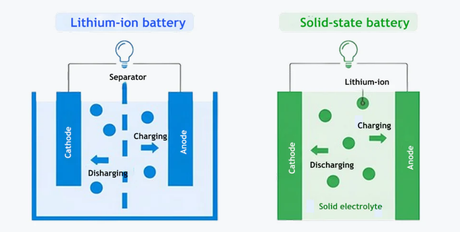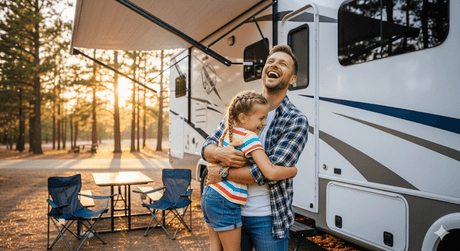Portable Solar Panels - From Orange To The Outback
Portable solar panels for caravans, outdoor events, and camping should be a standard unless you plan to travel light. They’re immensely useful in both everyday scenarios and in a genuine emergency.
And yet a lot of people haven’t embraced the utility of lightweight, portable solar panels for camping when they’re away from home. Ignoring for the moment that they can be literally life-saving, people are choosing to spend hundreds on disposable batteries, multiple USB power bricks, and extra fuel burned to generate electricity via their caravan’s engine.
So let’s talk about some of the reasons to invest in one or two flexible solar panels on the road.
Table of contents:
- How do flexible, portable solar panels work?
- What will a 100 watt solar panel run?
- How long do portable solar panels last?
- Are portable solar panels really worth it?
- Can you charge an EV with a portable solar panel?
- How do you connect portable solar panels to a caravan battery?
- Where to buy portable solar panels?
How Do Flexible, Portable Solar Panels Work?
Solar panels are made up of hundreds of small ‘cells’, each one capable of absorbing sunlight and turning it into electricity. In rigid solar panels, these cells are all packed tightly together for efficiency and mounted on a hard frame for permanency. The PV cells are connected together to form a solar panel, and the panels are then connected to an inverter that converts the DC electrical energy produced by the panels into AC electrical energy that can be used to power homes and businesses. The main components of a solar system will include solar panels, charge controllers, solar batteries, and inverters. They play the role of collection, monitoring, storage, and usage.

But lightweight, portable solar panels have a different design. The cells are spaced in such a way as to allow the panel to flex. This gives it more utility and durability on the road at the cost of a little bit of efficiency.
But the results are amazing. You can simply lay them out in a nice area, mount them on a caravan’s roof, or even put them on the sheltering surface of a lean-to. As long as these portable solar panels face the sun, they’ll generate electricity for you.
The best hours to use or gather this electricity are known as ‘ peak sun hours’. This is when the sun has its most direct path to your particular location. During peak sun hours, a portable solar panel can generate a surprising amount of electricity.
How much? Let’s examine that!
What Will A 100 Watt Solar Panel Run?
Investing in a single 100 Watt solar panel might seem futile. How much energy could such a small thing actually gather?
Quite a lot, indeed. Here are just some of the things that you can do using the power of a single portable solar panel:
● LED light strip - 10 W
● Electric shaver - 14 W
● Heating pad - 40 W
● Go Pro - 2 W
● Smartphone - 7 W
● Tablet - 9 W
● MP3 player - 5 W
All of those devices can be run simultaneously from the power of a portable solar panel.
In caravans, base camps, or anywhere else where it would be reasonable to have a battery, your portable solar panel’s utility goes way up. Mounting a 640 Wh Lithium battery weighing 15 pounds somewhere in your caravan allows you to capture most of the day’s solar power. That means you can use your microwave liberally, charge your mobile devices, and check your E-mail without ever turning on the caravan’s engine to charge up your main battery.
You can use this solar calculator to see what other small appliances you can run, or how much battery power you need to gather for bigger tasks.
Let’s not forget the most important thing that relies on power: Communications. If you need power for a shortwave radio or a satellite phone in an emergency, you don’t want to rely on a hand-cranked dynamo, particularly if injuries might be involved. Get the solar panel, and keep at least a small battery charged up.
How Long Do Portable Solar Panels Last?
That depends on the type that you decide to purchase. The general rule of thumb is that the more flexible a panel is, and the more it is actually flexed, the shorter its lifespan. A 5 to 10 year operational period is a fair estimate for a flexible 100 W monocrystalline panel; The five years material and workmanship warranty reflects that.
Mounted solar panels tend to last longer than ones that are freely laid out. This goes back to the flexibility factor - the more something gets moved around, the more degradation there’s going to be on both the surface coating and the internal parts.
The more rigid the panel, the longer it lasts, assuming top modern craftsmanship. Many houses and cabin-mounted solar panels can last up to 40 years in optimal conditions, for example.
Are Portable Solar Panels Really Worth It?
Every time you need to run your caravan’s engine, use propane or natural gas. You’re expending a one-time resource. One solar panel can save you hundreds of dollars over the course of a single season!
And there’s no reason you only have to use it on the road. Once you’re home, you can continue to use the panel to top up mobile devices, rechargeable batteries, and run LED lighting.
Over the course of five years, one portable solar panel could save you one or up to several thousand dollars, depending on how often you go out on the road and your particular lifestyle.
Can You Charge An EV With A Portable Solar Panel?

Absolutely not.
Listen, there are plenty of clickbait articles out there that will try to lure you in with the promise of charging your EV off of light weight portable solar panels. It just isn’t feasible. Let’s do the math:
The tiniest Tesla is a Model 3 Long Range using about 16 kWh of electricity per 100 km.
Let’s be generous and say you’re willing to tote around four 100 W portable solar panels for this very purpose.
Your tiny Tesla runs out of juice, so you set up the solar panels to charge it. Four 100 W panels, so 0.4 kW per hour, start happily pouring their energy into the Tesla’s hungry maw.
You wait. And you wait. At the end of a 6-hour peak sun session, you’ve generated 2.4 kWh of energy. In theory, you could travel a whipping 15 km now! That’s assuming the weather holds.
But you can’t. Because the charge rate on a Tesla has a minimum flow that requires you to rapidly provide the energy, not trickle it in.
So now you need to invest in a second battery and an inverter that won’t fry your car’s charger, and haul those around beside the stack of four solar panels.
It’s unrealistic. It would barely move your car, and it isn’t worth your time.
The rigid solar panels are about twice the size of the car that they’re charging. The station needs to sit in the sun all day to serve one to two cars. It requires a massive battery station to store that power.
That’s as close as you’re going to come to ‘portable’ solar EV charging with today’s technology … a massive station that requires several people to assemble, disassemble, and haul around.
Don’t fall for the clickbait. The answer is simply ‘no’.
How Do You Connect Portable Solar Panels To A Caravan Battery?
Before connecting the solar panels, you need to get everything ready.The picture of wiring diagram can show you directly what solar components you should own and how to connect a solar system.

In Australia, shore power is either 16 Amp or 32 Amp. Adjust all fuses as required for that level of power. Of course, Australia has between 50% and 100% more peak sun than the U.K., so adjust battery capacities as required. For a small portable power setup with a single solar panel, the aforementioned 640 Wh Lithium battery should serve. But if you plan to use multiple panels, consider 1280 Wh batteries as pictured in the diagram. They’ll store the power of a couple of 100 W portable solar panels for a full 10 hours of peak sun, if you’re on the north shore, for example. For extreme offroading or outback exploration, a couple of the 2.4 kWh batteries will give you more flexibility.
As to connecting the solar panels themselves, MC4 connector or ‘Multi-Contact, 4-millimeter’ cables are used, as noted in the diagram. How you mount the connected panels (permanently, on a swivel, or even completely unmounted for manual placement) is up to you, but check out this safety guide for some tips. For more details, you can follow the below video to know how to install a portable solar panel for caravans, truck campers, or RVs.
Where To Buy Portable Solar Panels?
At Renogy, of course! If you trust us enough to help you plan out your portable solar power plans, you can trust us to supply high-quality gear at excellent prices.
If you have any questions or you need some more intricate or detailed planning, feel free to contact us. We’re more than happy to help you out with more bespoke setups, arrange for bulk purchases, or simply point you in the right direction.
Related articles:
Solar panel efficiency in australia: complete guide
What to know about flexible solar panels?





![What Is a DC to DC Battery Charger [Comprehensive Guide]](http://au.renogy.com/cdn/shop/articles/IMG_3829_bd86de74-31d6-49fd-b9d5-265bb723091d.jpg?v=1757582605&width=460)



